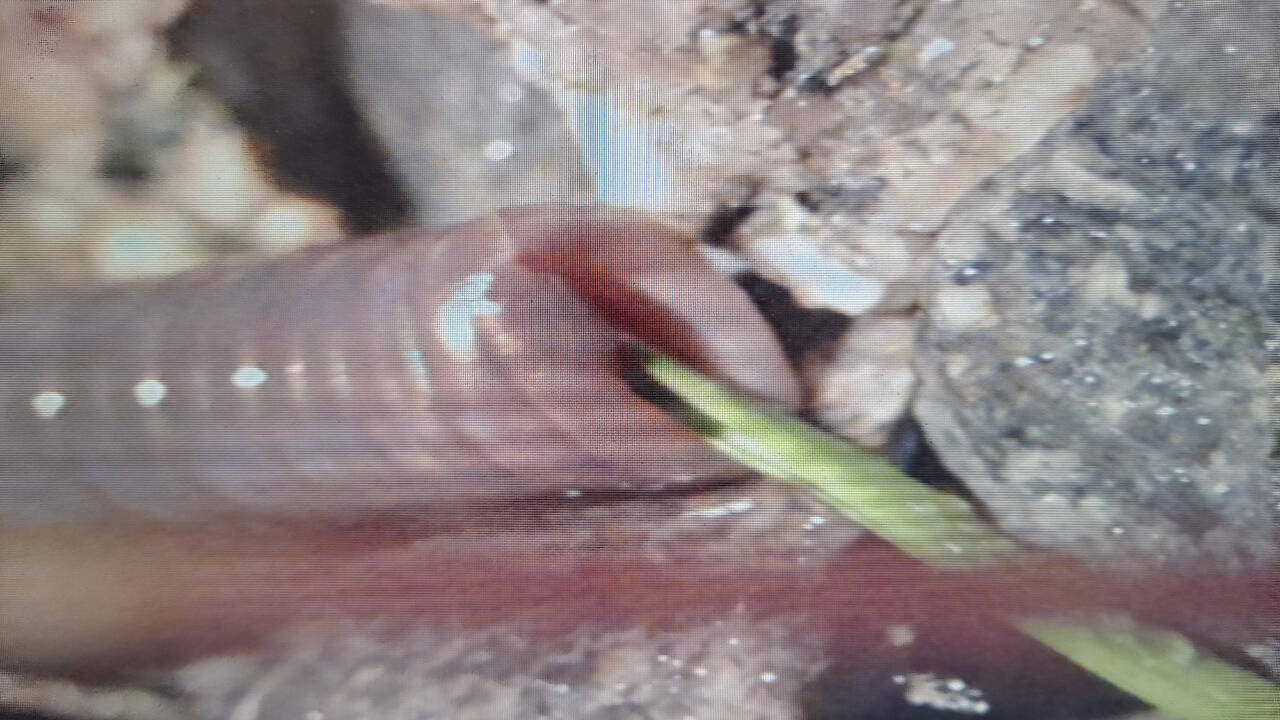While pollinators are important to the environment, but digging a little deeper, gardeners can find some “unsung heroes” of good gardens everywhere.
Join Brad Griffith — a local gardener, photographer and inventor — for “Understanding Your Nightcrawlers: If Darwin Had Popsicle Sticks,” the next Green Thumb Education Series presentation, to find out more on nightcrawlers and what Charles Darwin, earthworms and Popsicle sticks have in common.
Griffith will offer his thoughts and insights on earthworms that help aerate, filtrate and recycle organic material in soil from noon-1 p.m. on Thursday, May 9, at St. Andrews Episcopal Church, 510 E. Park Ave., Port Angeles.
The presentation is also available via Zoom; get a link at extension.wsu.edu/clallam/master-gardener-calendar (meeting ID 936 2989 8830, passcode 676224). Or join by phone, 253-215-8782.
His videography of nightcrawlers (Lumbricus terrestris) has led to new discoveries about worm behaviors.
“Understanding how worms turn green plant materials into nutrient rich soils is critical to the growth of our own food products,” Griffith said.
Brad’s experiment displays will show:
• A worm tearing off live green plant materials and moving stones with its mouth. Brad’s macro video photography takes you down inside a worm midden mound where this crossroads of the ecosystem begins to convert natural materials to nutrient rich soil.
• How to spot a nightcrawler’s front door entrance called a midden mound. Worms can move natural vegetation, soil, sticks, stones, leaves, grass, plastic toys, marbles, coins, Popsicle sticks and more to build this protective entrance to their burrow.
• How Charles Darwin’s worm experiments inspired Brad to design his own trials using the midden mounds and popsicle sticks.
The displays will also feature experiments for primary and secondary education use including field experiments such as “The Night Crawlers Tug-of-War,” “The Stone Drag,” “The Worm Hut” and “The Worm Well.” These experiments are useful in teaching behavioral science, developing observational skills and result in students becoming more aware of the everyday ecosystems that surround them.
Griffith fell in love with photography in high school and continued his education and career of 25 years working with film in the printing industry. His love of the outdoors brought his family to the Olympic Peninsula in 2000 when he started a construction business.
Finding new and unusual subjects to photograph led him to photograph nightcrawlers eating, drinking and moving sticks and stones to build their midden mounds.
He also realized the need for students to be creative with making their own STEM (science, technology, engineering, math) experiments and learning observation science. He invented a basic field experiment that students can make using popsicle sticks and tools they make themselves. His photography and videos can be found on his YouTube channel at youtube.com/@USASTEAMcom.
The Green Thumb Education Series, sponsored by the Washington State University Clallam County Master Gardeners, is held on the second and fourth Thursday of each month through October. In November, December, and January, one lecture is offered. Scheduled presentations are subject to change.
Visit the WSU Extension Clallam County website calendar (extension.wsu.edu/clallam/master-gardener-calendar) for the latest information on upcoming presentations.
For more information, call 360-565-2678.



